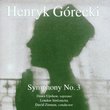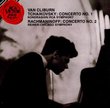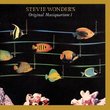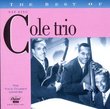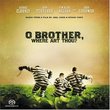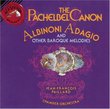| All Artists: Dmitry Shostakovich, Konstantin Scherbakov Title: Shostakovich: 24 Preludes and Fugues, Op. 87 Members Wishing: 0 Total Copies: 0 Label: Naxos Original Release Date: 1/1/1951 Re-Release Date: 2/20/2001 Genre: Classical Styles: Chamber Music, Historical Periods, Classical (c.1770-1830) Number of Discs: 2 SwapaCD Credits: 2 UPC: 636943474525 |
Search - Dmitry Shostakovich, Konstantin Scherbakov :: Shostakovich: 24 Preludes and Fugues, Op. 87
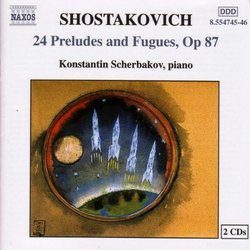 | Dmitry Shostakovich, Konstantin Scherbakov Shostakovich: 24 Preludes and Fugues, Op. 87 Genre: Classical
Shostakovich performed at a Bach bicentennial festival at Leipzig in 1950. Under the spell of Bach, he quickly wrote this homage, which contains some of his most consistently inspired and inventive music. After half a cent... more » |
Larger Image |
CD DetailsSynopsis
Amazon.com Shostakovich performed at a Bach bicentennial festival at Leipzig in 1950. Under the spell of Bach, he quickly wrote this homage, which contains some of his most consistently inspired and inventive music. After half a century, it is now accepted as a timeless classic, a sincere homage to Bach, still individual and expressive. Shostakovich wrote the music for his student Tatiana Nikolayeva, who performed the world premiere. Her three recordings of the cycle are close to definitive, especially the set on Melodiya, which is economically priced but uneconomically spread over three CDs. Scherbakov, who has already made some impressive discs for Naxos, provides a very strong challenge. No recording of this cycle has captured the brooding, inward quality of some of this music as well as Nikolayeva's, but Scherbakov comes close. Where virtuosity is required, he actually surpasses the impressive Nikolayeva. Considering the fine sound quality and extremely reasonable price of this set, it's at least a clear second choice for the ultimate recording of the series, and probably a good first choice for an introduction to the music. The performances are even superior to the well-known versions by Keith Jarrett and Vladimir Ashkenazy. --Leslie Gerber Similarly Requested CDs
|
CD ReviewsScherbakov digs deep and finds treasure Evan Wilson | Cambridge, Massachusetts United States | 02/21/2001 (5 out of 5 stars) "Shostakovich's 24 Preludes & Fugues are the pinnacle of 20th century piano music as far as I am concerned. They cover a wide range of moods and reveal new facets every time I listen to them. They can be enjoyed for the pure pleasure of their counterpoint, but Shostakovich also buried much pain and suffering in these pieces. No existing complete set gets them completely right, and this version is no exception. That said, this is still a terrific recording. Scherbakov appears to have looked deeply into Shostakovich's harmonic thinking and reveals some amazing things. At every turn, one hears interesting progressions and sonorities through his care with balances and voice-leading. This is especially true in second half of the set which in the past frequently seemed drier to me than the earlier pieces. Scherbakov reveals that they are merely subtler than the first twelve or so. Check out Preludes 21 and 22 for an idea of what I'm talking about. In the moto perpetuo of #21, things start out clear and simple but then the harmony spins widely of kilter and Scherbakov delights in the wayward movement. In the following Prelude, check out the really creepy sounds he elicits at the beginning.Overall, this is a very subdued rendition of this cycle and therein lies my only criticism. Some of the "bigger" fugues need a bit more heft than Scherbakov gives them. Still, he is so wonderfully intimate in these pieces that it's hard to quibble, especially for the asking price.If I was just being introduced to the music, I'd choose the Jarrett set for the incredible sense of wonder he brings to his cycle. But if that set entices you into the music, then this is the next set to get to reveal the richness in this music. Now, if we can only get a set with blazing intensity, I'll be completely happy.PS At all costs avoid the Ashkenazy. It may look enticing, but it's incredibly stale and dull." Pretty good album when you think of it Nancy Moran | Baltimore, Maryland USA | 07/15/2002 (5 out of 5 stars) "An utterly sensitive and delicate performance. Mastery of intricate rhythms. Phrasing impeccable. Profound sense of the meaning of chords and chord changes. Innate sensibility as regards to the intentions of the composer. Total command of the instrument. Dynamics almost beyond belief.Acoustics and recording exceptional.First choice and first rate if you're into Shostakovich." A Twentieth Century Piano Masterwork Robin Friedman | Washington, D.C. United States | 07/14/2004 (5 out of 5 stars) "Dmitry Shostakovich (1906-1975) is best-known for his symphonies and for his difficult political life in the former Soviet Union. Between 1950-1951, while his work was under a performance ban, Shostakovich composed a work for solo piano, the "24 Preludes and Fugues" Op. 87, which is remarkable for its intimacy and devotion to the art of pure music. It is one of the great piano works of the twentieth century. The complete work is performed on this 2-CD collection by Konstantin Scherbakov, a young Russian pianist.Shostakovich's work consists of a prelude and a following fugue in each major and minor key. It is modeled after Bach's two-volume "Well-Tempered Clavier" which consists of two volumes of preludes and fugues in each key. (Shostakovich was asked after completing this work whether he would compose another set, to parallel Bach's two sets. "Never!", he replied.) Chopin's 24 preludes is another model. I found Shostakovich's work closer in spirit to Chopin than to Bach.Unlike Bach's collections, which proceed in order on the chromatic scale, (c major and minor, c-sharp major and minor,d major and minor, etc) Shostkovich's cycle follows the circle of fifths. Thus, the first prelude and fugue is in C major while the second is in the minor key with the same signature as C major -- A minor. The work then proceeds up by fifths -- to G major and its relative minor of E-minor througout the 24 major and minor keys.In some instances, (such as nos. 3,6, and 10) the prelude and the fugue are written to contrast with each other. But most of the sets, I found, were complimentary in character with both the prelude and fugue expressing different aspects of the same emotional mood. Several of the fugues are based upon and develop the melodic material presented in the prelude. And some of the music does seem to be a deliberate recollection of Bach.There is a great deal of variety within the set, with some pieces ironic, some humorous, some sad and quiet, and others virtuosic and showy. The final work in the set, no. 24, is appropriately, the most triumphal in the collection; the work marking the mid-point, no. 12, also reaches a climax. The prevailing tone of the collection, for me, is one of deep introspection. It is as if Shostakovich was not writing to please an audience or to adjust to the vagaries of the political censors but only for himself -- to capture in the quiet of his own study and heart what he wanted to say musically without pressure from anyone. Bach's volumes are the model for this type of attempt at "pure" or "abstract" music. Shostakovich's writing reflects his own character as a composer of the twentieth century. No listener will mistake Shostakovich's fugues for Bach's.I thought Scherbakov's playing quiet, restrained, and thoughtful. It captures the character of this difficult work.This work is tonal in character and more accessible than much contemporary music. Nevertheless, it will bear repeated listening. I approached the work by listening to it through, and then by listening separately to each half (i.e. dividing it into two sets of twelve). This CD is available at a budget price and will offer the adventurous listener the opportunity to explore a masterpiece of 20th century piano music."
|

 Track Listings (24) - Disc #1
Track Listings (24) - Disc #1